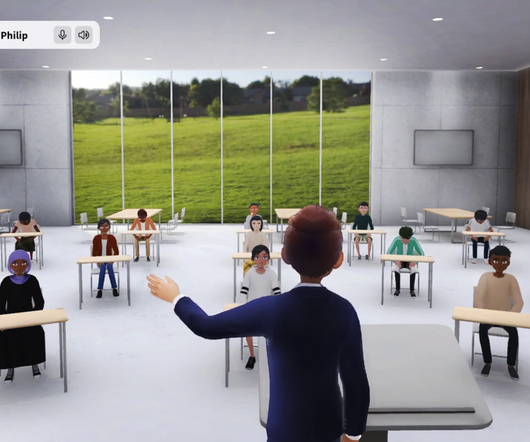6 Benefits of Immersive Learning with the Metaverse
ViewSonic Education
FEBRUARY 20, 2023
Broadly, the metaverse refers to the creation of virtual worlds or spaces in which social interactions can occur. While there are still challenges associated with the digital divide and access to technology, this gap is shrinking all the time, especially with smartphones widening access to digital content and software.















Let's personalize your content